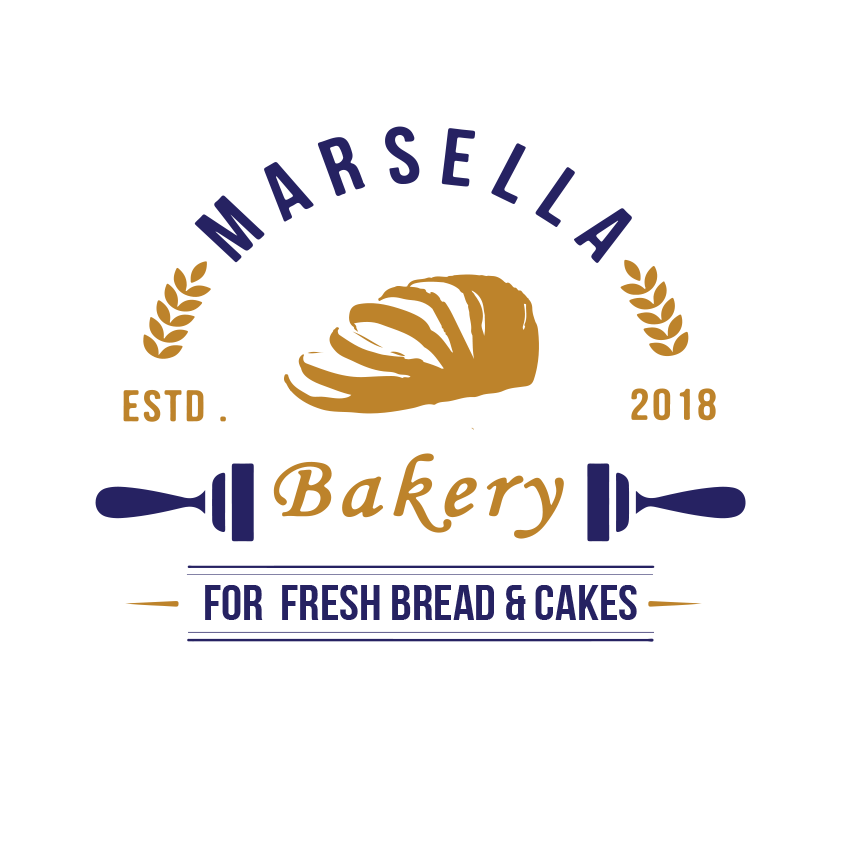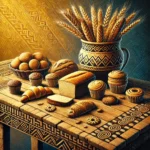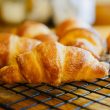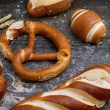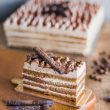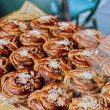1. Understanding the Basics of Bun Dough
Essential ingredients for perfect buns
The foundation of exceptional buns lies in the quality and proportion of ingredients used. The primary components include:
- Flour: All-purpose flour is commonly used, but bread flour can provide additional structure.
- Yeast: Active dry yeast or instant yeast are suitable options.
- Liquid: Water or milk, depending on the desired richness.
- Sugar: To feed the yeast and add a subtle sweetness.
- Salt: To enhance flavor and control yeast activity.
- Fat: Butter or oil for tenderness and flavor.
The role of yeast in bun making
Yeast plays a crucial role in the bun-making process. It is responsible for:
- Fermentation: Converting sugars into carbon dioxide, which creates air pockets in the dough.
- Flavor development: Producing compounds that contribute to the characteristic taste of baked goods.
- Texture: Influencing the final structure and crumb of the buns.
Importance of proper measuring techniques
Accurate measurements are essential for consistent results. Consider the following:
- Use measuring cups for dry ingredients and liquid measuring cups for wet ingredients.
- Spoon and level dry ingredients rather than scooping directly from the container.
- Be precise with yeast measurements, as small variations can significantly affect the outcome.
2. Preparing Your Kitchen for Bun Baking
Must-have tools and equipment
To ensure a smooth baking process, gather the following items:
- Mixing bowls: Various sizes for different stages of preparation.
- Measuring cups and spoons: For accurate ingredient portioning.
- Dough scraper: Useful for handling and dividing dough.
- Baking sheets or pans: Appropriate for the type of buns being made.
- Pastry brush: For applying egg wash or glazes.
- Kitchen scale: For precise measurements, especially when working with larger quantities.
Creating an ideal environment for dough rising
The rising process, also known as proofing, requires specific conditions:
- Temperature: Aim for a warm environment, ideally between 75°F and 85°F (24°C to 29°C).
- Humidity: A slightly humid atmosphere helps prevent the dough from drying out.
- Draft-free area: Protect the dough from air currents that may cause uneven rising.
Organizing your workspace for efficiency
An organized kitchen contributes to a more enjoyable baking experience:
- Clear countertops: Ensure ample space for kneading and shaping.
- Pre-measure ingredients: Arrange all components before beginning the mixing process.
- Position tools strategically: Keep frequently used items within easy reach.
3. Mixing and Kneading Techniques
Hand-kneading vs. machine mixing methods
Both approaches have their merits:
Hand-kneading:
- Provides greater control and connection with the dough.
- Allows for a better understanding of dough consistency.
- May result in a slightly more tender crumb due to less oxidation.
Machine mixing:
- Saves time and effort, especially for larger batches.
- Ensures consistent mixing throughout the dough.
- Useful for higher hydration doughs that may be challenging to knead by hand.
Achieving the right dough consistency
The ideal dough consistency varies depending on the type of buns being made:
- Soft and slightly tacky: Suitable for most standard buns.
- Firmer and less sticky: Preferable for shaped or decorative buns.
- Wetter and more elastic: Appropriate for certain artisanal styles.
Troubleshooting common mixing issues
Address these common problems to ensure optimal dough development:
- Dry dough: Gradually add small amounts of liquid until the desired consistency is reached.
- Overly sticky dough: Incorporate additional flour in small increments.
- Lumpy dough: Continue kneading to fully integrate all ingredients.
4. Mastering the Art of Shaping Buns
Different bun shapes and their purposes
Various bun shapes serve different culinary and aesthetic purposes:
- Round: Classic shape suitable for dinner rolls or hamburger buns.
- Oval: Often used for submarine sandwiches or hot dog buns.
- Knot: Decorative shape that provides an interesting texture.
- Spiral: Visually appealing and allows for the incorporation of fillings.
Step-by-step guide to shaping various bun styles
Round buns:
- Divide the dough into equal portions.
- Cup your hand over a portion and move it in a circular motion on the work surface.
- Apply gentle downward pressure to create surface tension.
- Continue until the bun is smooth and round.
Oval buns:
- Shape the dough into a round as described above.
- Use both hands to gently elongate the round into an oval shape.
- Rock the dough back and forth to even out the shape.
Tips for achieving uniform sizes and shapes
Consistency in size and shape ensures even baking and a professional appearance:
- Use a kitchen scale to weigh individual portions of dough.
- Employ a dough divider for creating multiple pieces simultaneously.
- Practice shaping techniques regularly to develop muscle memory.
- Allow shaped buns to rest briefly before final proofing to prevent shrinkage.
5. Proofing and Rising: Keys to Fluffy Buns
Understanding the proofing process
Proofing is a critical step that allows the yeast to produce gas, resulting in light and airy buns:
- Initial rise: Allows the dough to develop flavor and strength.
- Final proof: Occurs after shaping and determines the final texture of the buns.
Factors affecting dough rise time
Several variables influence the duration of the proofing process:
- Yeast activity: Fresher yeast and higher quantities lead to faster rising.
- Temperature: Warmer environments accelerate yeast metabolism.
- Humidity: Adequate moisture prevents the dough surface from drying and restricting expansion.
- Dough composition: Higher sugar or fat content may slow down yeast activity.
Signs of properly proofed dough
Recognizing when dough is adequately proofed is crucial for optimal results:
- Visual cues: The dough should approximately double in size.
- Tactile test: Gently press the dough with a fingertip; it should slowly spring back, leaving a slight indentation.
- Aroma: A pleasant, yeasty scent should be noticeable.
6. Baking to Perfection
Optimal oven temperatures for different bun types
Baking temperatures vary based on the bun style and desired outcome:
- Standard dinner rolls: 375°F to 400°F (190°C to 204°C)
- Enriched buns (e.g., brioche): 350°F to 375°F (175°C to 190°C)
- Crusty artisan-style buns: 425°F to 450°F (218°C to 232°C)
Achieving the perfect golden-brown crust
Several factors contribute to an appealing crust color:
- Egg wash: Brush the buns with beaten egg for a glossy, golden finish.
- Steam: Introduce steam into the oven during the initial baking phase for a crisp crust.
- Sugar content: Higher sugar levels in the dough promote browning.
Testing for doneness and avoiding overbaking
Ensure buns are properly baked without becoming dry:
- Internal temperature: Use a thermometer to check for an internal temperature of 190°F to 200°F (88°C to 93°C).
- Hollow sound: Tap the bottom of a bun; a hollow sound indicates doneness.
- Visual inspection: Look for an even, golden-brown color across the surface.
7. Enhancing Flavor and Texture
Adding herbs, spices, and other flavorings
Incorporate additional ingredients to create unique flavor profiles:
- Dried herbs: Rosemary, thyme, or oregano can be mixed into the dough.
- Spices: Cinnamon, cardamom, or nutmeg add warmth to sweet buns.
- Garlic or onion powder: Impart savory notes to dinner rolls.
Incorporating different flours for unique tastes
Experiment with various flour types to alter flavor and nutrition:
- Whole wheat flour: Adds nuttiness and increases fiber content.
- Rye flour: Contributes a distinctive taste and denser texture.
- Semolina: Provides a slightly sweet flavor and golden color.
Techniques for creating softer or crustier buns
Adjust methods to achieve desired textures:
Softer buns:
- Increase fat content in the dough.
- Use milk instead of water as the liquid component.
- Brush with melted butter immediately after baking.
Crustier buns:
- Reduce fat content in the dough.
- Introduce steam during the first few minutes of baking.
- Allow buns to cool in the oven with the door slightly ajar.
8. Storing and Serving Your Homemade Buns
Proper cooling and storage methods
Ensure buns maintain their quality after baking:
- Cool completely: Allow buns to reach room temperature before storage.
- Short-term storage: Keep in an airtight container at room temperature for 2-3 days.
- Maintain moisture: Place a slice of bread in the container to prevent drying.
Freezing and reheating tips
Extend the shelf life of buns through proper freezing techniques:
- Wrap individually: Use plastic wrap or aluminum foil to prevent freezer burn.
- Freeze promptly: Place in the freezer within 24 hours of baking.
- Thaw at room temperature: Allow frozen buns to thaw for 30-60 minutes before reheating.
- Refresh in the oven: Warm thawed buns at 300°F (150°C) for 5-10 minutes.
Serving suggestions and pairings
Enhance the enjoyment of your homemade buns:
- Savory applications: Serve alongside soups, stews, or as sandwich bread.
- Sweet variations: Pair with jam, honey, or flavored butter for breakfast or tea.
- Seasonal adaptations: Incorporate seasonal ingredients or shape buns to match holiday themes.
Summary
Mastering the art of baking perfect buns at home requires attention to detail and practice. By understanding the fundamental principles of dough preparation, shaping techniques, and baking methods, one can consistently produce delicious, homemade buns. Experimenting with various flavors, textures, and presentations allows for endless creativity in the kitchen.
FAQs
How long does it typically take for bun dough to rise?
The rising time can vary depending on factors such as yeast activity and room temperature, but generally ranges from 1 to 2 hours for the initial rise and 30 minutes to 1 hour for the final proof.
Can I substitute instant yeast for active dry yeast?
Yes, you can substitute instant yeast for active dry yeast. Use about 25% less instant yeast than the amount of active dry yeast called for in the recipe.
Why did my buns turn out dense and heavy?
Dense buns can result from insufficient proofing time, overworking the dough, or using old yeast. Ensure proper rising time and check the freshness of your ingredients.
How can I prevent my buns from becoming dry?
To maintain moisture, avoid overbaking, brush the buns with butter after baking, and store them in an airtight container once cooled.
Is it possible to make buns without yeast?
While traditional buns require yeast, there are recipes for quick breads or soda bread-style buns that use chemical leaveners like baking powder or baking soda instead.
